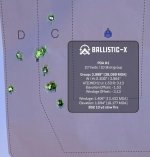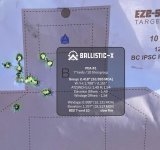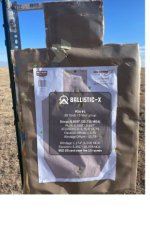Last week when I acquired my four new guns, one of which was the Bodyguard 2.0, I had so many to "shoot-in and evaluate" that I had no real time to familiarize myself with any one of them. It takes a lot of time, effort, fuel, and money to get to the Pawnee Grasslands shooting site where I can shoot completely without interruption or even without seeing another person, so I will often take many guns to shoot… which decreases the amount I can learn from any particular firearm.
My initial (brief, 60-round) assessment of the BG2 was mixed - the firearm felt great, carried like nothing ever in history, and pointed well… until you got to the sights, which the rear is so wide that it is unsuited for any precision work. I noted like virtually every other person reporting on their experience here on the internet, that the firearm was shooting significantly to the left of the point of aim. I did not quantify my experience due to the pace of shooting last weekend with all the new guns.
So I was determined to take this firearm to the desert test location to evaluate it for its capabilities - I wanted to shoot it slowly so I could gauge its accuracy and its precision. I wanted to shoot it fast to see if its limitations for rapid fire recovery could be assessed. I also wanted to give this little pocket rocket an opportunity to misbehave in the feed and function aspect, if it was so inclined.
First Challenge: 10 yard Slow Fire at Center Mass.
The course of fire I chose was simple - two reactive targets and one full-sized IPSC plastic target holder, with a far-smaller IPSC Practice Target (12" x 18") stapled to the middle. I was to shoot the paper target with the firearm in slow fire at 10 yards, measured with my laser rangefinder, aiming at the "A" letter in the A-Zone (which is 3.25" wide by 6.25" tall) center mass and determine how far off POA the impact cone would fall. Here are the results:






